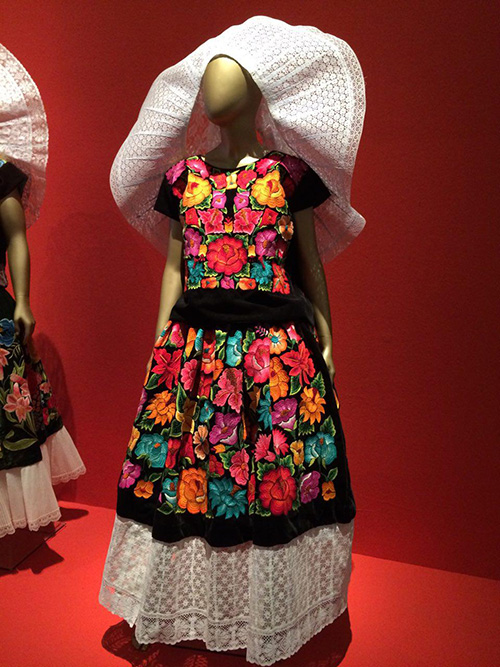 Mexico is so rich in bright clothing traditions. Colors, patterns, shapes, textures – South American continent in special that way. But this time, our topic is the traditional dress of Oaxaca region of Mexico. The folk costumes of this area are greatly influenced by the clothing traditions of local indigenous people – Zapotec, Mixtec, Mazatec, Nahua, and some other. Some local garments are long forgotten, others changed to become contemporary clothes. But no matter what, this region is famous throughout Mexico and far outside the borders for its traditional outfits.
Mexico is so rich in bright clothing traditions. Colors, patterns, shapes, textures – South American continent in special that way. But this time, our topic is the traditional dress of Oaxaca region of Mexico. The folk costumes of this area are greatly influenced by the clothing traditions of local indigenous people – Zapotec, Mixtec, Mazatec, Nahua, and some other. Some local garments are long forgotten, others changed to become contemporary clothes. But no matter what, this region is famous throughout Mexico and far outside the borders for its traditional outfits.
Oaxaca is one of the states in South Mexico. It has a bright and diverse folk culture, including clothing traditions. Particularly, Oaxaca is famous for its handmade textiles.
There are several ethnic groups in Oaxaca state – Zapotec, Mixtec, and Nahua tribes are the largest and most well-known among them. The local clothing crafts and traditions differ in some ways from other Mexican regional designs. Though, there are, of course, many similar features in the folk costumes from various Mexican areas.
If to talk about unique garments used in Oaxaca, a cape-like item called “tilma” or “Las Capa” is one of them. This garment traditionally was made from cotton and worn only by the upper-class Mexicans. We should also mention that cotton fabric used to be reserved for wealthy upper-class people because it is much more comfy and easy to work with cotton than usual plants and leaves, which were used to make clothes by the poor.
The clothing traditions in Oaxaca have changed a lot during the centuries. Some of the folk local garments are no longer made and used – we can learn about them only from the old wall art and sculptures. With time, as the climate, skills, crafts, customs change, the clothes also alters. So, the modern national costume of Oaxaca is different from the original folk dress of this region of Mexico.

The Traje de Tehuana, a contemporary indigenous dress of Oaxaca
The traditional textiles of Oaxaca are made from cotton or locally produced silk, hand-spun and hand-dyed by local natural dyes (red, purple, and burgundy are popular colors). The folk attire consists of a typical Mexican blouse called “huipil”, a fabric sash called “ceñidor”, and a headdress called “paño”.
Local craftswomen used backstrap looms to weave the cloth. This type of weaving allows to make only comparatively narrow strips of fabric (that is if to compare with the 4 post looms), so the clothing articles were made by sewing together a few panels of fabric.
Most of Mexican folk costumes are brightly colored and embellished with various patterns, either woven into the cloth or embroidered on it. The traditional attire of Oaxaca is no exception. Local garments are richly adorned with multi-colored designs, depicting animals, birds, insects (for instance, butterflies are typical for Mazatec textiles), spirals and other geometric shapes, flowers, etc. Also, there is an old Mexican tradition to associate certain colors with cardinal directions: red meant north, white was south, yellow – east, and blue and green meant west.
Even inside the Oaxaca region of Mexico, there are various garments typical for different local ethnic groups or even particular villages. So the diversity of folk outfits, traditional patterns, and costume designs in Oaxaca is impressive. This Mexican area has a rich folk clothing culture.
The photo is from:



It´s partially true, depends on the Oaxaca region.